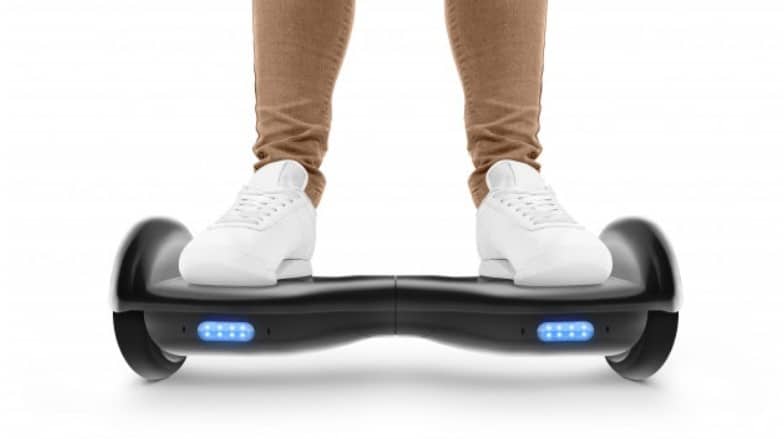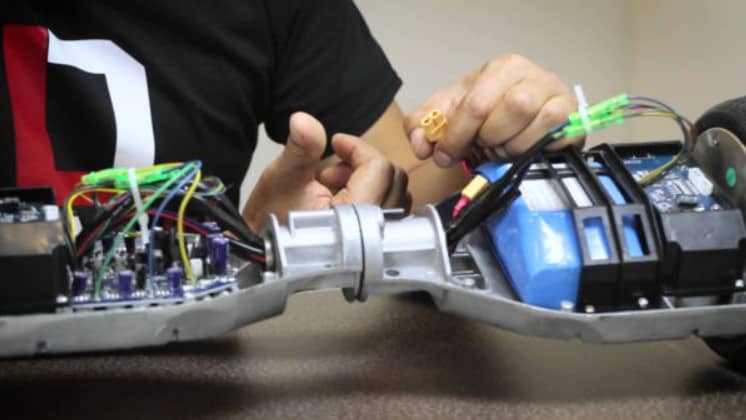How Does a Hoverboard Work? Easy Beginner-Friendly Explanation

Do you enjoy riding a hoverboard? If you do, you are probably curious about how a hoverboard works and the science behind the movement. In this article, you will learn about the different hoverboard components that are responsible for making a hoverboard move the way it does.
Hoverboards do not hover above the ground as you would expect. However, hoverboards are built to feel that way. These self-balancing smart scooters are very fun to ride, and some are built as an alternative form of transportation as well.
With its two wheels, the rider can experience a floating feeling, without the board having to float off the ground. If you haven’t experienced riding a hoverboard, you should try it. With its self-balancing technology, people can learn how to ride one in no time.
Hoverboard Components

For a hoverboard to work, it has a few essential components. Because of these components, hoverboards are quite heavy machines. Despite its size, some hoverboards are heavier than electric skateboards and longboards.
On a standard hoverboard, you will find these following components:
- Gyroscopes
- A logic board
- A Battery
- 2 motors (one for each wheel)
- 2 wheels
- Deck/ footpads
These are a couple of components that make a hoverboard move. Some hoverboards have more extra features, but we will talk more about that later:
Gyroscope
The gyroscopes (1) equipped on a hoverboard are responsible for a hoverboard’s self-balancing technology. Because you are controlling the board with both feet, hoverboards are equipped with two gyroscopes for each wheel, so that you can move in different directions.
The gyroscopes process the information it reads from your movement and sends that information to the logic board.
After a while, you will experience an out-of-sync movement, which will cause your hoverboard to act up. If this happens, there is nothing to worry about. In most cases, your hoverboard just needs recalibration, which is easy to do. Recalibrating your hoverboard will reset the gyroscopes and fix the sync issue.
Logic Board
The logic board, also known as the hoverboard control system, works as the brain of your hoverboard. It is responsible for all the movement and behavior based on the information sent by the gyroscopes and other components. It is similar to the motherboard of a computer and the main circuit board found in most electric devices.
The logic board is also responsible for executing the different riding modes, LED lights, speed, power consumption, powering up, and shutting down. In other words, the logic board ties all the components together to work as a signal unit.
Battery
The battery supplies the hoverboard with the power to operate. It may be obvious that without a battery, the hoverboard will not work. Most hoverboards are equipped with lithium-ion batteries because of their lightweight, small size, and efficiency.
Wheels and Motors
A standard hoverboard is equipped with two motors; one for each wheel. The motors allow the wheels to accelerate. Because of the two gyroscopes and motors, the wheels can move independently from each other, which allows the board to turn in different directions.
The wheels are equipped with sensors that will detect the movement of the rider and move accordingly.
Deck/ Footpads
The deck is where the rider places their feet at all times during the ride. Underneath the footpads, there are two switches for each side that are used to detect how you move.
Each of the switches is activated when you tilt your feet in the direction you want to go.
How does a Hoverboard Work
So, how does a hoverboard work?
With all of these components working together, a hoverboard will move to your command. Just like any system, all the components are integrated to work and perform at its best to give you a satisfying ride. Most self-balancing scooters can memorize your movement and collect data to move and adapt to your riding style. The smart scooter technology works great, especially with high-end models.
What Can a Hoverboard Do?
A can do all sorts of movements. You can go forward, backward, turn, or even spin around to your heart’s desire.
Once you master the basic movement and understand how it works, riding a hoverboard is something you won’t forget that easily.
Even if you don’t practice every day, riding a hoverboard is something that sticks.
A hoverboard can be used for cruising around town. Some hoverboards with rough range can be used to get to work and back, while some hoverboards can be used for riding dirt roads. If you want to ride on any terrain, make sure you purchase an off-road hoverboard.
How Do you Move on a Hoverboard?

Learning how to move on a hoverboard is relatively easy to learn, especially for kids. The secret to moving on a hoverboard lies within your ability to shift your weight. It may be challenging at first, but you will get the hang of it soon enough.
Forward
To move forward, make sure you are comfortable on top of a hoverboard. Then, lean towards your front and apply pressure on your toes while trying to keep balance.
Backward
To move backward, instead of leaning on your toes, lean on your heels this time and make sure you try to balance by keeping your hips straight.
Turning
Instead of leaning on both feet just like moving forward or in reverse, you only need to use one foot to turn. If you are turning left, use the right foot to move and vice versa.
Conclusion
To sum it up, most hoverboards that you will encounter will have the same basic components and will work and operate the same. The only differences will be the extra features that come with it, the size, and the minor physical differences.
References
zippyelectrics.com may earn commissions when you purchase items through links to external source such as Amazon. Read our affiliate disclosure here.

